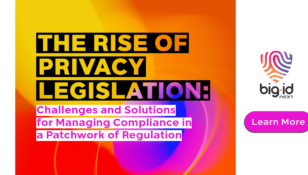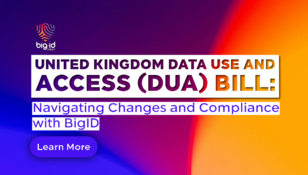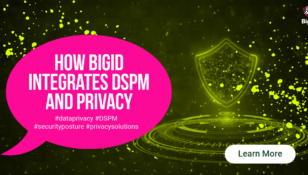Navigating AI Data Privacy: Current Hurdles, Future Paths
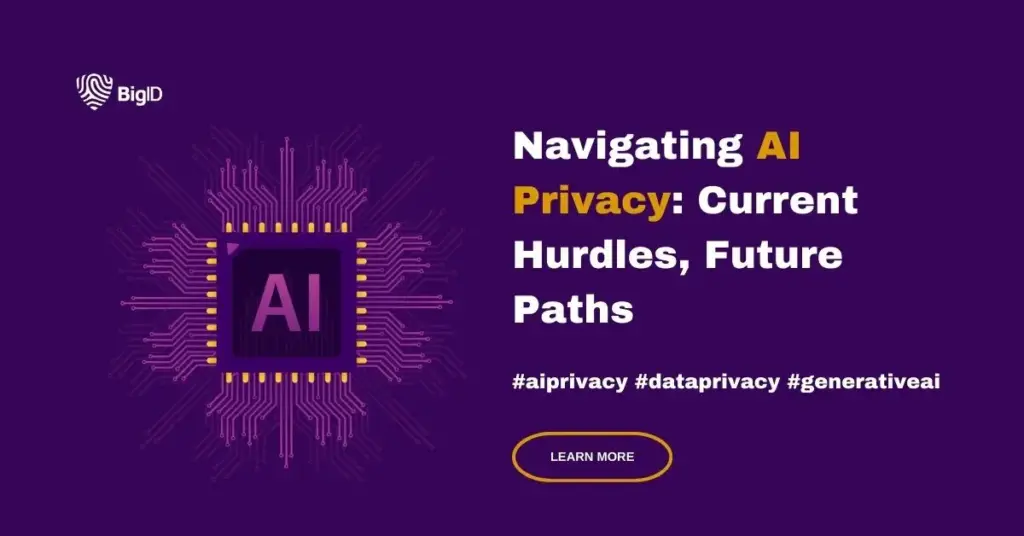
The artificial intelligence market is estimated to reach $407 billion by 2027. By 2030, it’s set to reach $1.4 trillion, increasing by a CAGR of 38.1%.
It’s not a huge surprise. Manufacturing, cybersecurity, clinical research, retail, education, marketing, transportation, and many other industries are benefiting from the use of ai in data practices and data processing. .
However, it makes AI privacy a concern.
How Does Machine Learning Impact AI and Consumer Privacy?
AI and data privacy are intrinsically connected because of machine learning (ML). As you know, ML is used to “teach” models using supervised or unsupervised learning.
You feed the model vast quantities of data, which it uses to learn. The more data you give it, the more it develops its own logic based on what it’s learned. Then, you can use that learning in the form of generative AI or automation.
This vast quantity of data, or big data, is very important in this process. It has a considerable impact on ML in the form of the three Vs — volume, variety, and velocity.
Volume
A larger volume of data enhances the analytical power of the model. The more information it has access to, the more robust and comprehensive its analyses. It also means the model will have a more detailed, specific understanding of the information being analyzed.
Variety
In conjunction with volume, variety helps models discover patterns that might not be evident at a surface-level investigation. This diversity allows for more complex and nuanced analysis. That’s because it adds different dimensions and perspectives to the data being examined.
Velocity
Velocity refers to the speed at which information is generated, processed, and analyzed. A high velocity means data can be analyzed quickly, almost in or in real time. This rapid analysis can be crucial in applications where time-sensitive decisions have to be made.
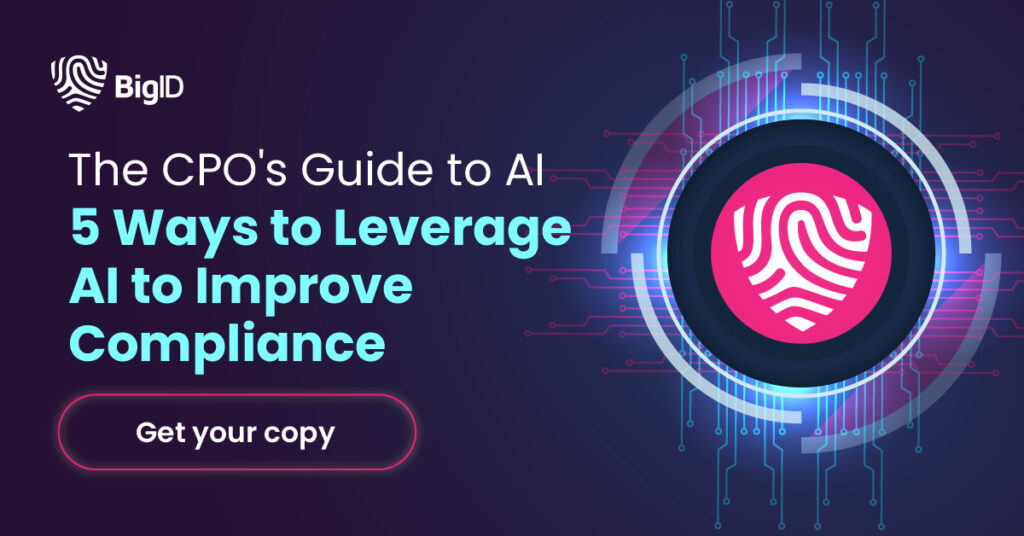
AI Privacy Issues
As you can see, data collection is an integral part of AI and ML. However, that brings us to artificial intelligence and privacy concerns. Data collection comes with certain risks.
Here they are:
Data Collection and Consent
We’ve seen that smart automation platforms need vast amounts of data to learn and make decisions. The collection of this data can sometimes happen without explicit consent from the individuals whose data is being used, which is a privacy violation.
Ensuring that data is collected ethically and legally, with clear consent from individuals, is a significant challenge.
Privacy Protection and Data Security
Once data is collected, keeping it secure from unauthorized access and breaches is a significant concern. AI systems, like any digital system, are vulnerable to cybersecurity threats.
Data breaches can expose sensitive personal information, leading to privacy violations and potential harm to individuals. Designing data security to keep the information safe is of utmost importance.
Bias and Discrimination
AI can inadvertently learn and perpetuate biases present in the training data. These biases can lead to discriminatory outcomes, affecting privacy and fairness. For instance, an AI system might make inferences about job applicants based on biased data. That could lead to unfair treatment or decisions.
Surveillance and Monitoring
The use of AI in surveillance systems — such as facial recognition technology — raises significant privacy concerns. These systems can monitor individuals without their consent in public spaces or through their social media usage.
As a result, the individual being monitored loses their anonymity and privacy. They are being followed wherever they go, whether in the real world or cyberspace. This can be a potential misuse of their personal data.
Lack of Transparency and Control
AI systems can be complex and opaque, which makes it difficult for individuals to understand how their data is being used and for what purpose. The lack of transparency and control over personal data is a significant privacy issue.
Without knowing what information is being collected and why, a person can’t give informed consent. They may not know if they want to opt out of sharing their data, which means the data they share violates their privacy.
Data Minimization
AI’s efficiency often depends on processing large datasets, which can conflict with the data minimization principle. This principle advocates for using the least amount of data necessary for a given purpose to protect individual privacy.
You must balance AI’s data needs with the need to minimize data collection and retention, which can be challenging.
Inference and Prediction
AI systems can infer sensitive information about individuals that wasn’t explicitly provided. For example, an AI might use seemingly unrelated data to predict personal attributes — i.e. health status, political affiliation, or sexual orientation.
That raises privacy risks and concerns even when the original data collection was considered non-sensitive.
Principles of Responsible AI — AI Policy, Privacy and Data Protection Regulations
As you can see, with big data comes big responsibility. We need robust data protection and privacy laws and standards to ensure that personal information handling practices are covered by stringent regulations.
The role of such regulations is not only to protect privacy but also to foster an environment of trust. They need to ensure that the benefits of AI can be realized ethically and responsibly. They should ensure transparency, accountability, and the individual’s right to their data.
In Europe, the General Data Protection Regulation (GDPR) protects personal data from the risks of AI technologies. In the US, the Federal Trade Commission (FTC) holds businesses accountable for collecting, using, and securing their customers’ data. It has been penalizing businesses that misrepresent how or why they collect customer data.
There’s also the AI Executive Order for safe, secure, and trustworthy development and use of AI in the US.
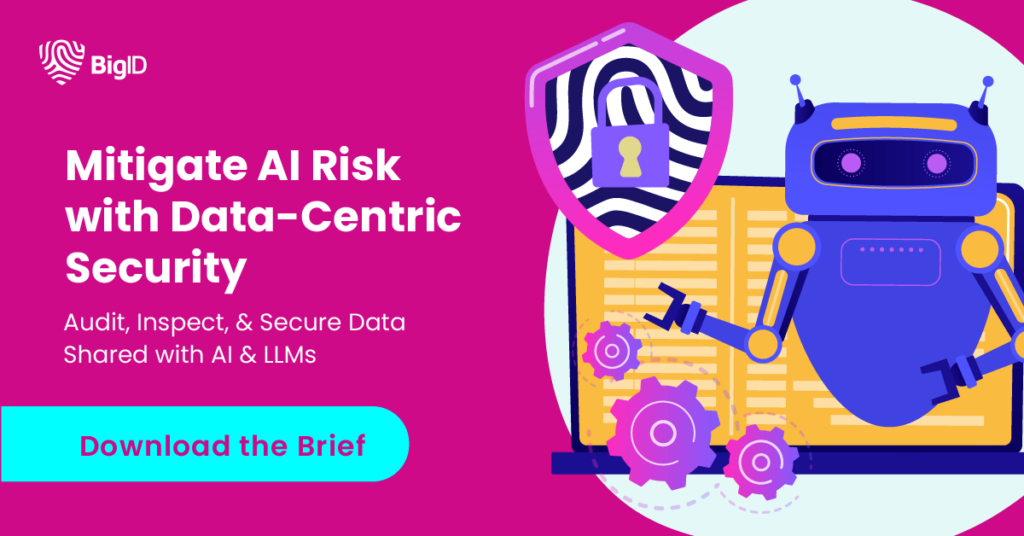
Strategies to Mitigate AI and Data Privacy Issues
As we’ve seen, there are regulations in place to protect people’s information. And, they are being updated as technology changes.
The fact is that we require data to create better AI models. However, we also need to limit it to only what’s essential.
To maintain privacy, we need to secure the data, and make sure it can’t be linked to the individual it came from.
We also have to ensure:
- Limitation of collection: Only collecting what’s needed, and nothing more.
- Specification of purpose: Clarity on what the information will be used for.
- Limitation of use: Using the information only for its intended purpose.
Here’s how you could do it:
Data Anonymization and Pseudonymization
Anonymity is a big part of collecting data. The most important consideration for personal information is whether it’s identifiable or not. Before using personal data for training AI models, anonymize or pseudonymize it to remove or replace identifiers that link the data to an individual. This can help protect privacy and reduce risks if the data is compromised.
Encryption
When you collect, process, and analyze data, you also need to store and transfer it. At any of these stages, it can be breached and stolen. Hiding information behind a layer of encryption means it’s not as easy to steal and use.
Use strong encryption methods for data at rest and in transit. Encrypting the data ensures that even if it’s intercepted or accessed without authorization, it remains unreadable and secure from misuse.
Access Control and Authentication
One of the dangers of data collection for AI is that it might be accessed by people who don’t need it. To prevent that, you must implement strict access controls and authentication mechanisms, so only authorized personnel can access sensitive data.
This includes using multi-factor authentication, role-based access controls, and logging and monitoring access to sensitive data.
Data Minimization
Excess information is not an asset. It takes up storage space and has to be protected. In short, it’s a liability.
Collect only the data that is absolutely necessary for a specific AI application. Follow the data minimization principle to reduce the volume of sensitive information at risk and aligns with privacy-by-design principles.
Regular Security Audits and Compliance Checks
As technology evolves, so do cyber threats. To protect the data you’ve stored, you need to be sure that you’re ahead of the game.
Conduct regular security audits using ai threat intelligence to identify vulnerabilities in AI systems and data storage infrastructures. Ensure compliance with relevant data protection regulations such as GDPR, CCPA, or any industry-specific standards.
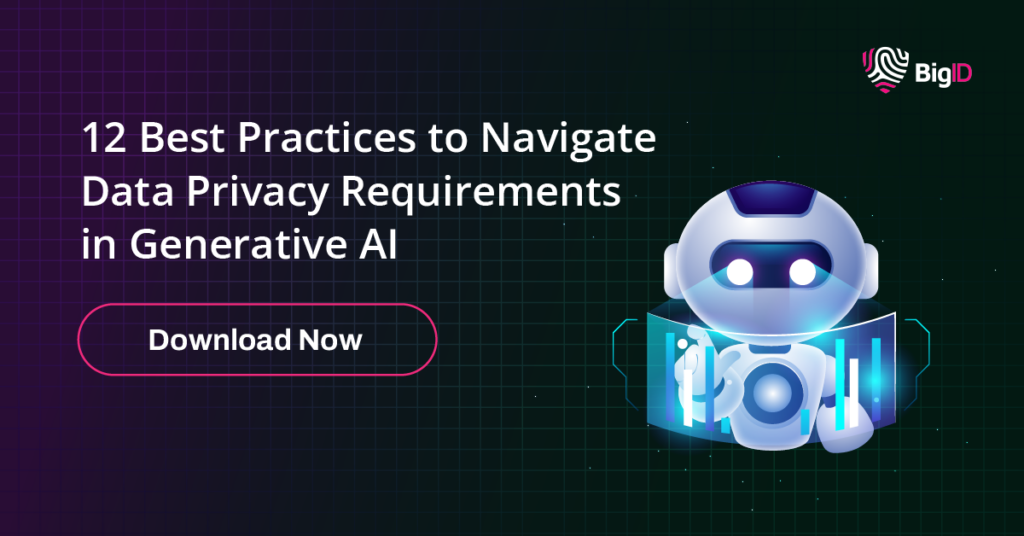
Differential Privacy
You can’t avoid collecting information from individuals, but you can protect their identity. Anonymizing is one way to do it. The other is to apply differential privacy techniques when training AI models, which involve adding a certain amount of random noise to the datasets. That helps mask individual data points while allowing the overall patterns to be learned by the AI.
Robust Data Governance Policies
Yes, there are laws and regulations around data governance. However, your organization should have its own policies to protect your customers’ information.
Develop and enforce comprehensive data governance policies that cover data collection, storage, use, and deletion. These policies should include guidelines for ethical data use, privacy impact assessments, and procedures for responding to data breaches.
Federated Learning
In traditional forms of machine learning, information was collected and stored in a single database. That, of course, meant that it was easier to steal.
Federated learning is a new approach to developing AI models. It trains systems using decentralized devices or servers without sharing local data. This approach allows AI systems to learn from data without needing to centralize sensitive information, thus reducing privacy and security risks.
Internet of Things (IoT) devices are capable of generating vast amounts of customer data. Instead of collecting it, you can use federated learning for your AI model. You’re no longer at risk of a database breach but your model still has access to that valuable customer information for learning.
Transparency and Accountability
Clear communication is essential for building trust with users and stakeholders. That’s why it’s important to maintain transparency in AI operations and data usage. Inform stakeholders about data usage, purpose of collection, and data protection measures.
One way to do this is to implement clear accountability measures that ensure responsible data handling. It demonstrates that you take responsibility for the data you collect and how it’s used. You would also need to install mechanisms to identify, report, and correct biases or errors in the AI’s decisions.
Secure Software Development Practices
Under the privacy by design principles, privacy and security need to be built in from the ground up in AI development. Adopt secure software development practices, including regular updates and patches to AI systems and their components.
Ensure that security is integrated into the software development lifecycle from the initial design to deployment and maintenance.
Protecting Children’s Privacy
If you gather and use data from children under thirteen, you must comply with the Children’s Online Privacy Protection Act (COPPA). Its rules are periodically updated by the FTC. Currently, they’re being updated to oversee AI in products and services being used by children. It’s important to consider how your AI model will collect children’s data and how it will interact with them.
The Future of AI and Privacy
AI privacy is set to change and mature as technology evolves. New challenges will require continual adjustment of regulatory frameworks.
However, we also have new methods of managing the privacy paradox in AI development.
Let’s take a look at them.
Emerging Opportunities in AI Technologies
Quantum Encryption
This emerging technology promises to revolutionize data security. Quantum encryption, or quantum key distribution (QKD), uses the principles of quantum mechanics to secure communication channels.
QKD allows two parties to share a secret key when sharing information. No one without the key can read the encrypted message.
But that’s not all. According to quantum mechanics, measuring a system disturbs it, which makes it virtually impossible for intruders to intercept or decipher data without detection with QKD.
Advanced Differential Privacy
The National Institute of Standards and Technology (NIST) provides crucial guidance on implementing differential privacy. Differential privacy is a technique that adds randomness to data queries, ensuring individual privacy while allowing for useful analysis.
Advanced differential privacy refers to the evolution and refinement of differential privacy techniques. These techniques are designed to protect individuals’ privacy when their data is included in statistical analyses.
Differential privacy is a way to measure how much privacy an algorithm provides. It uses a mathematical guarantee to protect the privacy of individual data when performing a database query. As a result, it’s nearly impossible to identify the source of the information, even when you factor in other information associated with it.
Innovations in differential privacy are making it more effective and practical for real-world applications. New algorithms and techniques are being developed to provide stronger guarantees of privacy. At the same time, they maintain the utility of the data for analysis.
Privacy-Preserving Machine Learning
Homomorphic encryption is a technique that enables the computation of encrypted information without having to decrypt it first. It helps protect information from hackers who may try to access it during the processing stage.
Techniques such as federated learning and homomorphic encryption allow AI models to learn from data without ever compromising it. This means that sensitive information can remain on the user’s device or stay encrypted, which significantly reduces the risk of privacy breaches.
Decentralized Data Architectures
In conventional data management systems, data is stored and processed on central servers. While efficient, this centralization creates vulnerabilities, including a single point of failure. If these central systems are compromised, the data they hold is at risk of exposure, theft, or manipulation.
Unlike centralized systems, decentralized architectures distribute data across a network of computers or nodes. Each node holds a copy of the data or a portion of it. All data transactions or processing tasks are performed across this network, rather than on a single server.
A well-known form of decentralized technology, blockchain creates a secure and transparent ledger of transactions. Each block in the chain contains a number of transactions. Once a block is completed, it’s added to the chain in a linear, chronological order. This structure ensures that every transaction is recorded securely and immutably across multiple nodes.
Blockchain reduces risk by distributing data across a network, avoiding central points of failure. Even if one or several nodes are compromised, the integrity and availability of the data are preserved by the other nodes. Furthermore, the use of cryptographic techniques ensures that data transactions are secure and tamper-proof.
AI and Data Privacy With BigID
With BigID’s industry-leading platform, you can manage your AI privacy issues confidently and securely. We offer solutions for safeguarding sensitive data and ensuring AI systems are built on the bedrock of privacy and compliance.
The platform helps you automatically identify sensitive data. It also enables you to enforce robust privacy policies and seamlessly align with the latest AI governance frameworks.
Our commitment to data minimization and secure data access enhances your security posture. It also ensures your AI initiatives meet the highest standards of ethical and responsible use.
Would you like to learn more about AI security—book a 1:1 demo with our experts today.



